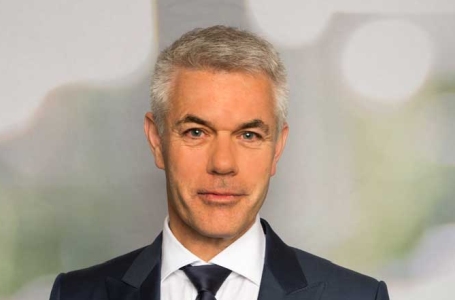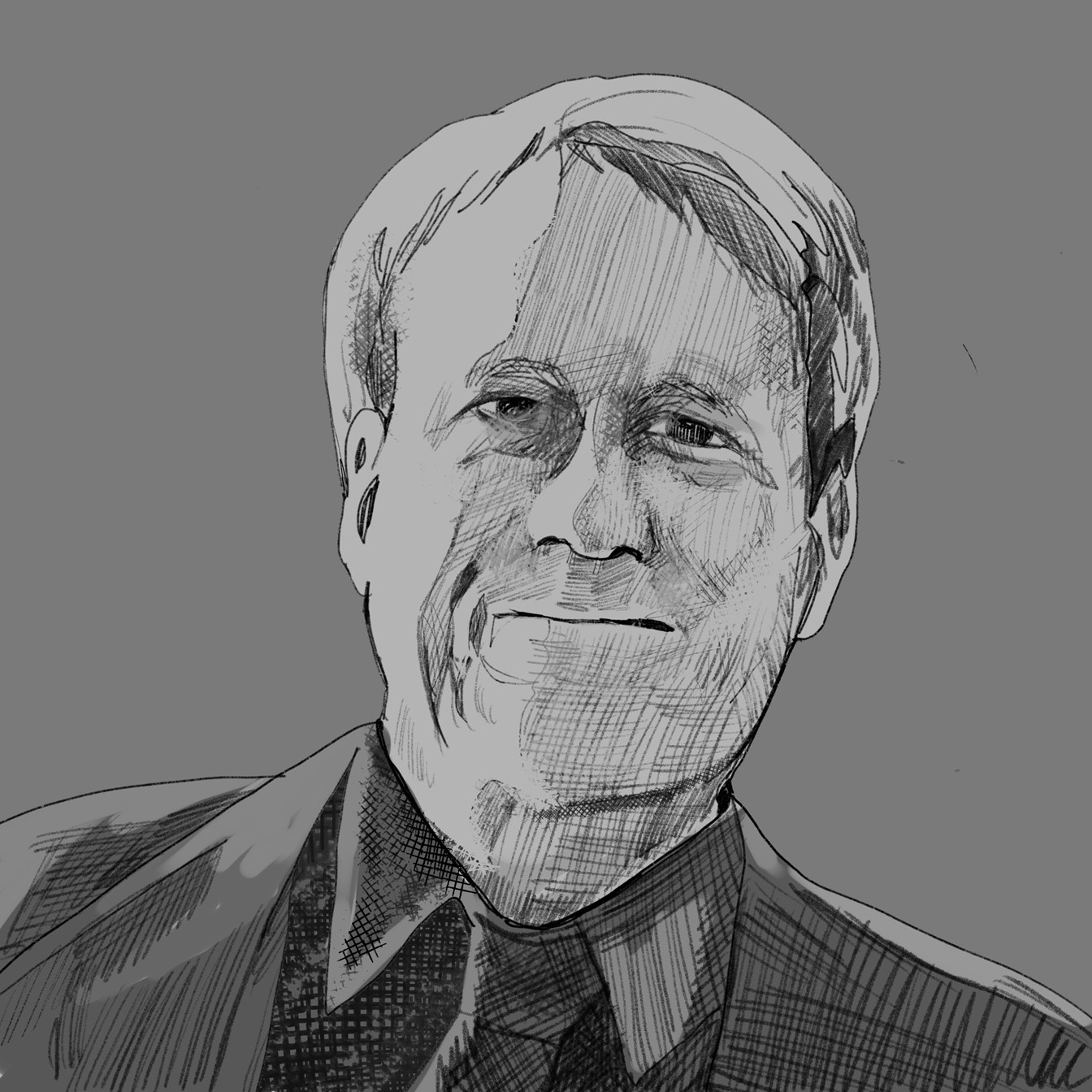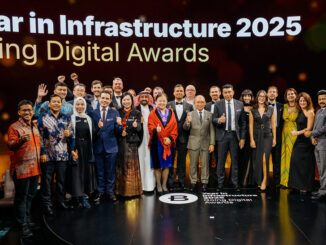
A conversation with Hexagon CEO Ola Rollén on pursuing dual goals of prosperity and sustainability
Hexagon is not strictly a geospatial company; that is only one vertical it serves. While several of its divisions are recognizable leaders in the geospatial sector; Leica Geosystems, Intergraph, and NovAtel, there are other divisions focused on manufacturing technologies, autonomy and positioning, agriculture, process and plant, safety, and security, and more. It would be difficult to summarize Hexagon in a single sentence. The reach is broad, but what they do for customers in these verticals is the same: boost efficiency and reliability—for a land surveyor, a factory owner, farmer, or autonomous vehicle developer. And these multiple divisions complement each other in many ways.
There are two goals that improved efficiency can help achieve. One is growth, prosperity, and profitability. The other is sustainability. Hexagon CEO Ola Rollén is a vocal proponent of these dual goals and the notion that (to paraphrase) ‘making money and saving the world are not incompatible’. In reality, the incentive the former represents could be the key to achieving the latter.
Having grown Hexagon from a small tuna fish importer in Sweden to a prominent global company in a few short decades, it is quite evident that Rollén excels in making good business decisions. And now that he and Hexagon are increasing effort to support sustainability, let us hope that this is met with similar success. Rollén is what I would call a practical idealist; someone who wants to save the world, but actually has plans of how to do so. I connected with Rollén recently for brief conversation on the subject.
GS: There is a segment of society that subscribes to the age-old adage that “doing good can be bad for business”, and another segment that says, “doing business is bad for doing good”. This gets reflected in the ever-shifting tides of public opinion, and who people choose to put in charge. I’m thinking that neither is strictly true, and that we need to strike a balance, as you have spoken about many times.
OR: First, you need to zoom out a bit and realize it’s not business—it’s people. It’s not business driving cars. It’s not business consuming electricity. It’s not business eating steak. We all must understand that we’re all part of this. It’s not big companies alone—it’s us.
GS: We see individual people trying to be proactive, governments trying to be proactive, and businesses getting proactive. It has been heartening to see, in recent years, businesses committed to promoting sustainability. While in some cases they seem to be reading the winds of change and just talking about it, but there are many putting substantive measures in place. Are you seeing progress?
OR: I have, actually. And it’s fun, because I think millennials and the younger generations, obviously, they should be more interested in this planet than we are. Because we have less time on it left. But I do see a big changes; I see great interest from our younger employees in Hexagon. We’ve created a company called R-evolution.
An example is a project where we built a solar plant in Spain, and what we’re doing is developing the [bleep] out of it! We’re trying to really get high yield. The average yield for a solar panel is roughly 20%. And if you can bring it up to like, 25% or 30%, that would be a huge change. And now we’re building a wind farm and we’re going to do the same: we’re going to check the gear boxes, check the rotor side angle against the wind, etc. We’re doing this, in a scientific way, to bring up productivity and efficiency for wind power as well. And then beyond that, we’re involved in power grids, power grid efficiency, agriculture efficiency, manufacturing efficiency, construction efficiency—everything. We meant what we said three years ago at HxGN (the annual conference)—we’re living as we preach.
GS: I think of the subject of infrastructure, and the global infrastructure boom. The different infrastructure investment initiatives, in the U.S. and elsewhere, contain quite a bit of funding for R&D for the digitalization of AEC and smart infrastructure. Those are actionable items, but I’m worried too much effort might be expended on buzz term concepts like “metaverse”. A recent Gartner paper (www.gartner.com/en/articles/what-is-a-metaverse) on the subject was dominated by talk of NFT’s, digital assets, virtual shopping, etc. But there in a corner of the diagram was “infrastructure”. While some folks seem to be trying to coopt the term, that aside, do you think the concept could play a big role in realizing sustainable growth?
OR: Absolutely. I think it’s a necessity. We do have to create, just in models, new ways of doing things and see what the outcome is. It’s like trial and error: you’d rather do it in a digital twin than in the real deal. And I am absolutely certain that digitalizing the world and having a copy where you try everything, test and simulate different scenarios, is the way—so I’m a believer.

GS: I can see this happening in the infrastructure sector, and the geospatial sector supporting that. Digitalization of infrastructure life cycles—design, construction, operations—building greener, and building smarter, as you have always promoted. Your company is tackling this from many angles.
OR: We’ve never defined ourselves strictly as a geospatial company. And I think that it’s beneficial. For starters, there are three areas we want to focus on. We want to focus on digitalizing discrete manufacturing. And the way we will do that is to make our quality enabling systems talk to production machines, so they are more efficient and produce less waste. Then we have a second focus, and that is process. And by process, I mean anything from agriculture, to mining, to chemical plants, petrochemical plants, nuclear plants, and so on—we want to create digital twins for those industries as well so that they can improve efficiency and reduce impact. And then the third is all the other applications where we are. Like surveying, mapping, design, and construction.
For instance, if you want to talk about geospatial, we’re covering North America and Europe twice per year now with our imagery program, where we create 3D imagery, using our airborne sensors. And now we’ve developed something called Hexagon Digital Reality (hxdr.com), where we’ve created a platform to fuse point clouds from the air, from the street, and from interiors, and merge into mega point clouds.
This can be used for smart infrastructure. And we can also sell it to real estate agents, to insurance companies, and navigation applications where you might start using robots to deliver parcels or autonomous cars. So those are really the three verticals, we’ve identified up until now, where we are going and where we are going to grow.
GS: Speaking of point clouds and meshes for these large-scale 3D reality models, we’re seeing a lot of interest in using things like voxels. Are these various types of models something that end user constituencies will be able to easily tap into for different uses?
OR: End user constituencies will definitely use this for anything from planning of your society to do flood analysis or traditional GIS things. But I also think that private companies will use it to equip autonomous cars to navigate. I think we’re all going have a digital twin of our house. So that when you sell it, a real estate agent can take people through it virtually. And you could bring the model home, if you’re one of the prospective buyers, and sit by the kitchen table and measure and see what fits. ‘Would that look good? I don’t remember the views. Were they any good? Do I have to remodel the kitchen?’ And beyond that, we’re dabbling with creating digital clones of people. We’re working with various retailers, to create digital cutting rooms. And then the next step is not far from gaming.
GS: And with so many applications for design and construction. One that note, there is way of looking at actions and impacts, a classifying of these as ‘light green’ and ‘dark green’. For instance, recycling that plastic bottle, as an induvial, might seem ‘light’. But say an initiative to put out more recycling receptacles, perhaps robotically collected, encourages and enables more recycling. And likewise, every time a surveyor, engineer, or geospatial practitioner does something that improves efficiency, that contributes to those many little bits that count.
OR: We are super tuned into that and have some great examples. Again, check out R-evolution and see projects like what we are doing in the seagrass meadows in the Bahamas. We’re using our bathymetric LiDAR, and data from partners, that includes satellite data, marine vessel surveys, scuba divers, and [even sensor tagged] tiger sharks to catalog and archive the seagrass. And then we’re selling carbon offset rights with the partner. And eventually it is the Bahamas that collects that those fees and in return they’re going to invest in patrol ships, and things to protect what is anchoring the seagrass to protect it from things that will destroy them. Sea grass is one of the biggest natural carbon sinks. Protecting and scaling it is a super good way of capturing carbon. And we’re working on trawlers to automatically pick up the trash in the ocean, great examples of technology, and geospatial technology applications.
GS: I talk with young folks, even my own kids, that are very keen on doing things to help sustain the world they will inherit. They think about traditional paths, like working for environmental non-profits, but I keep thinking that they might do just as much good, if not more, by joining industries that are proactively promoting, and acting on, some of the most impactful initiatives.
OR: But you know, industry is nothing but a mirror of ourselves. I mean, a mirror of society, the way we choose to live, the way we consume. And I think the point is that we can maintain our lifestyle: you don’t have to stop flying, you don’t have to stop driving a car, you don’t have to stop eating meat. But we must change the way we do it. And if we do that, then we’re going be fine. But if we don’t change, and we just dig our head in the sand, then it’s going be too late.
That’s why you need business, and business mechanisms, to drive the change. Look at look at history, like with the gold rushes. If there is money to be made, people will be attracted to it like gravity. It’s the quickest way of changing policy. Policymakers and politicians; they might be good and well-intentioned but can really struggle to get anything done. They’re stuck; they must win elections and win over the people, so it can take forever for them to change legislation.
GS: You’ve spoken many times about acting boldly with shared purpose. The problem is that a great many people are not interested in shared purposes. There are some who generally oppose, or are convinced to oppose, just about anything that looks like shared purpose, while many more just do not care much either way. People understandably get busy with their lives and aren’t much interested. But I remember in some of your presentations and blog posts, you hinted that part of the answer is incrementally making it easier for more people to share in a bold purpose, even if they’re not aware that they are doing it. Automobiles got more efficient over time; it’s becoming more difficult to buy a very inefficient auto, and so on. Sort of leading people, through the choices that business makes available to them.
OR: It’s actually quite easy. We must start with the energy sector; that represents 35% of pollution. The way we consume electricity and power, that must change. How should it change? Well, as a matter of fact, solar and wind is working extremely well. And then battery storage capacity needs to be built. In the meantime, we need to switch off coal and go for gas because gas is half as bad as coal. And you can convert coal to gas. There are so many things we can do in the short term to fix this.
And then you look at the second biggest polluter, which is agriculture. That’s 25% of all the pollution. And the biggest culprit there is meat, it’s beef. So, should we stop eating beef now? No, maybe we should eat less. But also in the meantime, we could further develop lab grown meat—it comes from the cow’s DNA. If we fix the energy sector and the agricultural sector, we’d fixed 60% of the pollution. And then we can start tackle transportation which is 15%. Switch to electric cars and so on, which we already are doing.
Businesses are leading in doing these things. We must rely on business to do this transition into a more sustainable society—it’s an absolute imperative that we do it.
Rollén is not alone in expressing such ideas and acting on them. We see this across multiple industries, with noteworthy prevalence in the geospatial industry. One does not have to be particularly focused on saving the world to benefit, business-wise, from this goal. Hexagon and other firms develop and provide solutions to enable you to improve efficiency. Whether motivated by profit or progress, improving efficiency can yield both. I wonder how many other pressing issues could be solved by embracing “and”, rather than “or”.





Be the first to comment